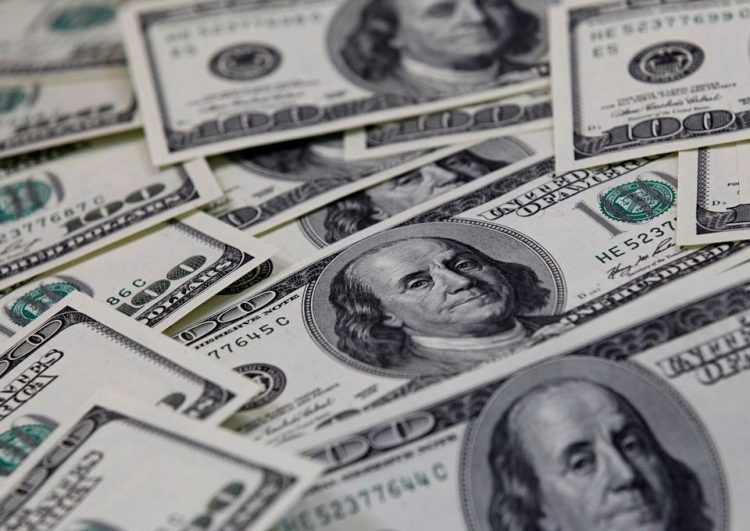© 2020 All rights reserved to Maaal Newspaper
Publisher: Maaal International Media Company
License: 465734
Dollar on the rise as investors gear up for Fed
The dollar hovered near a two-decade peak against a basket of currencies on Wednesday, after yields on U.S. Treasuries leaped ahead of another aggressive rate hike expected from the Federal Reserve.
The U.S. dollar index, which measures the greenback against a basket of currencies, was up 0.1% to 110.27, extending a 0.6% overnight gain, and remained not far below a 20-year high of 110.79 hit this month.
Yields on the two-year U.S. Treasury notes, a rough gauge of interest rate expectations, hit 3.992% overnight, the highest since 2007, while yields on the benchmark 10-year Treasury rose to 3.604%, the highest since 2011.
Higher yields increase the attraction of owning Treasuries and the dollars with which to buy them.
At 1800 GMT the Federal Reserve will announce policy settings, and markets have fully priced in a 75 basis point (bp) rate increase, with a 19% chance of a 100 bp increase and a forecast for rates to peak around 4.5% by March 2023.
Investors’ focus will also be on the updated economic projections and dot plot estimates showing where Fed officials see interest rates heading.
“The next level we see the (U.S. dollar index) getting to in the near-term would be 112 points,” said Kristina Clifton, a senior economist and senior currency strategist at Commonwealth Bank of Australia.
“If we do just get the 75 basis points from the Fed, it would take a fairly hawkish message to push the U.S. dollar up to that level.”
Sweden’s Riksbank surprised markets on Tuesday with a bigger-than-expected 100 bp increase, but it was little help to the currency – weighed by growth risks – which fell to a 20-year low after the decision.
Sterling last traded at $1.13705, languishing near a 37-year low of $1.1351, while the euro was 0.05% lower at $0.9964, extending by a smidge its 0.56% fall overnight.
The Australian and New Zealand dollars meanwhile hit multi-year lows on Wednesday. The Aussie hit a trough of $0.6666, its lowest since June 2020, while the kiwi fell to $0.5885, its lowest since April 2020.
The Canadian dollar similarly fell to a two-year low at 1.3376 per dollar after official data on Tuesday showed a surprise slowdown in inflation.
The Bank of England and the Bank of Japan will announce policy decisions on Thursday, with markets split on the magnitude of a rate hike by the former while policymakers in Japan are expected to stand pat.
“Inflation has lifted, but I think that’s largely been because of food and energy, so I think they’re going to want to see inflation become a bit more broad-based before they change their policy stance,” said Clifton, referring to the Bank of Japan.
Japan’s core consumer inflation quickened to 2.8% in August, hitting its fastest annual pace in nearly eight years and exceeding the central bank’s 2% target for a fifth straight month, data released on Tuesday showed.
The yen, which has fallen about 20% against the U.S. dollar this year, fell about 0.1% to 143.83 per dollar, not far off its 24-year low of 144.99.






